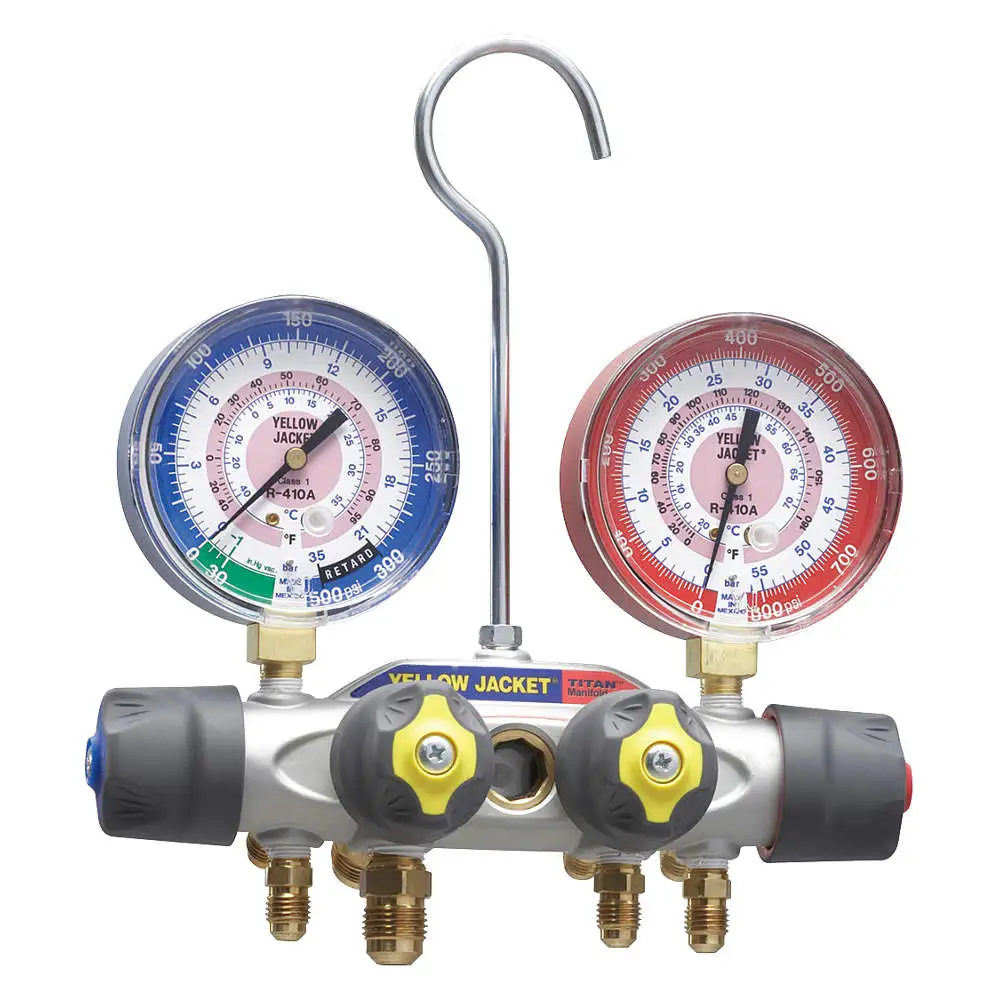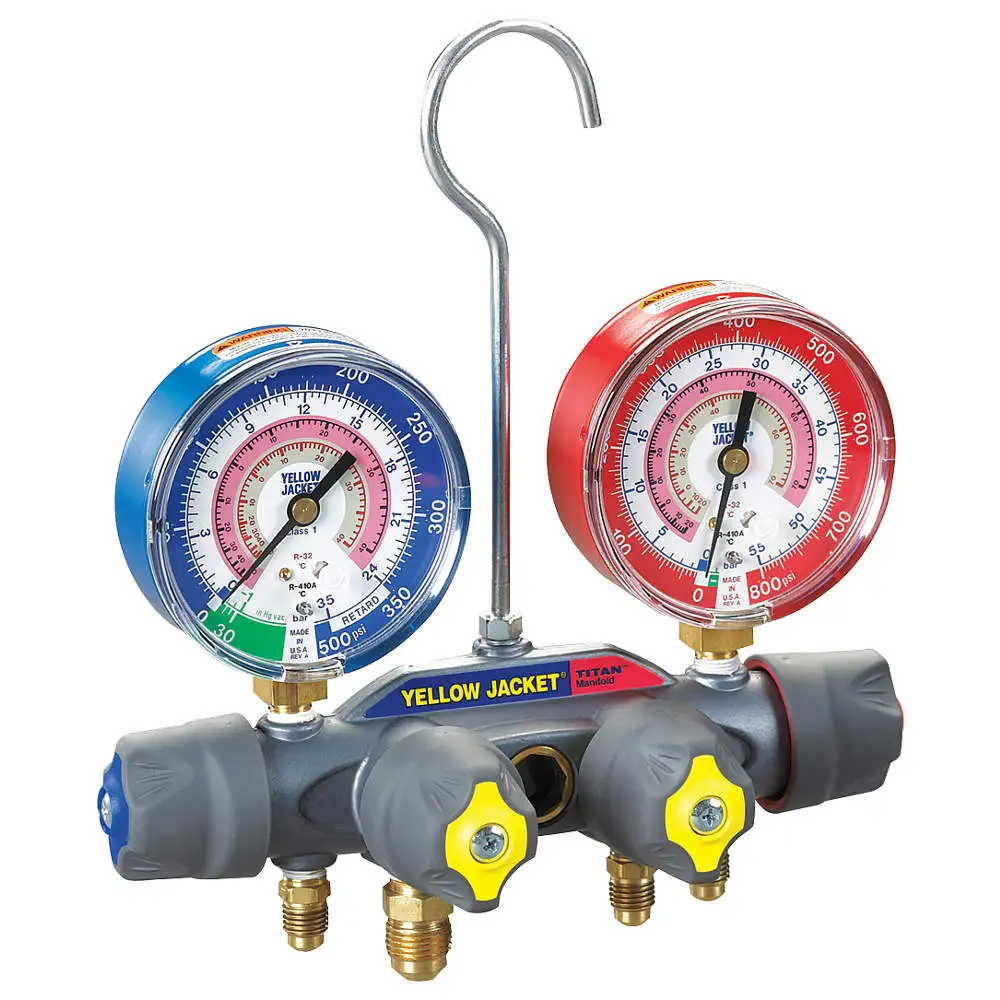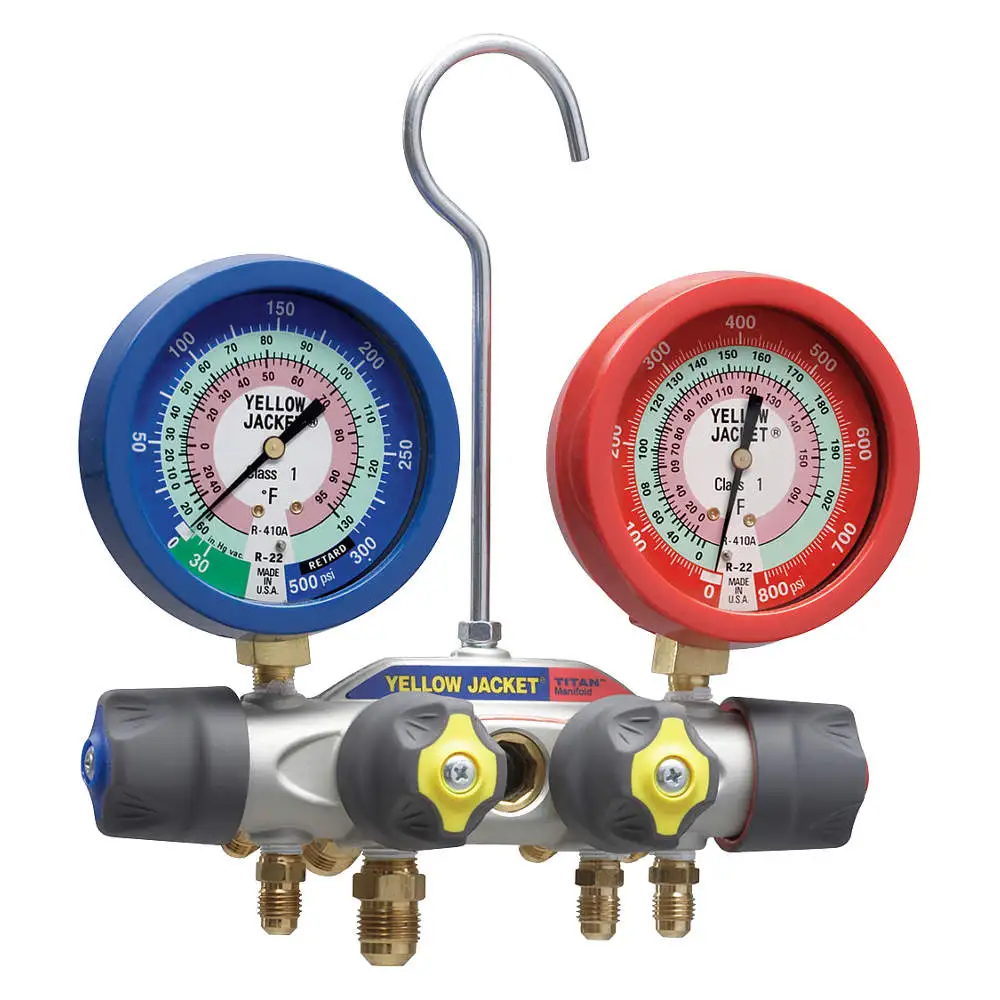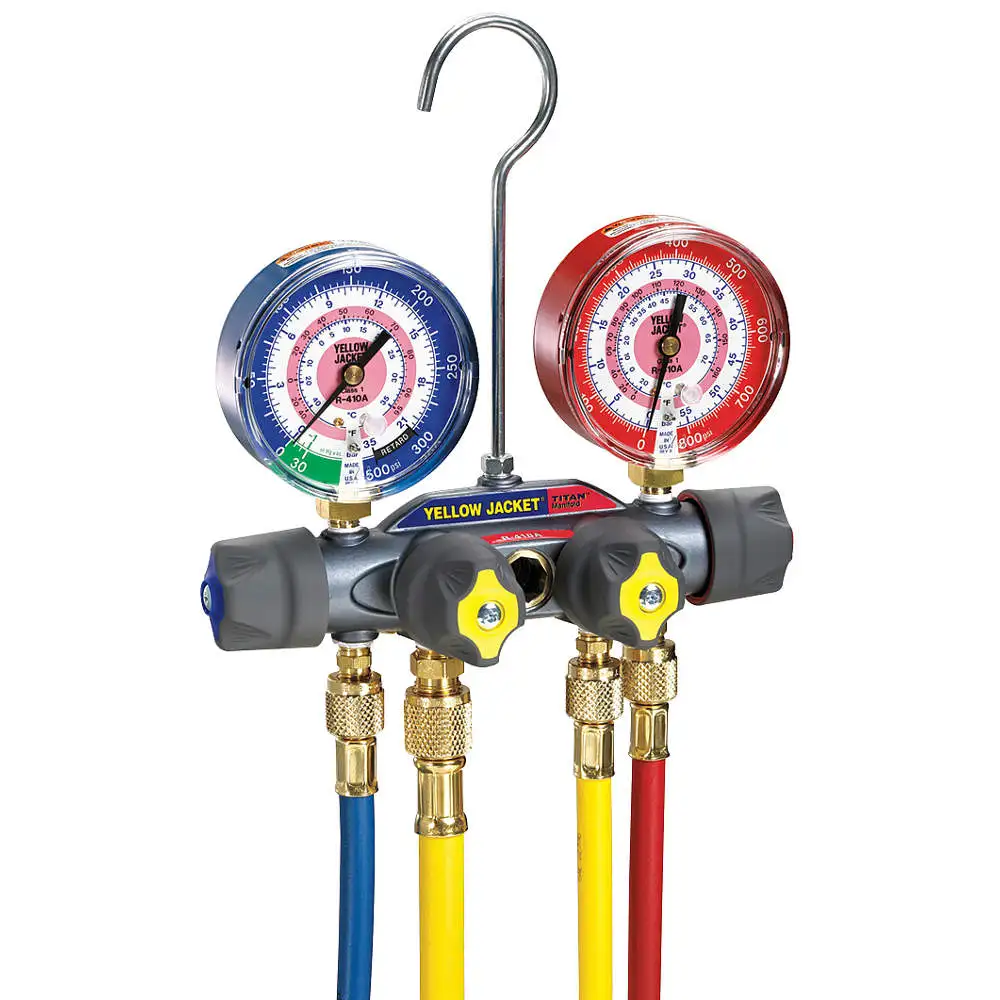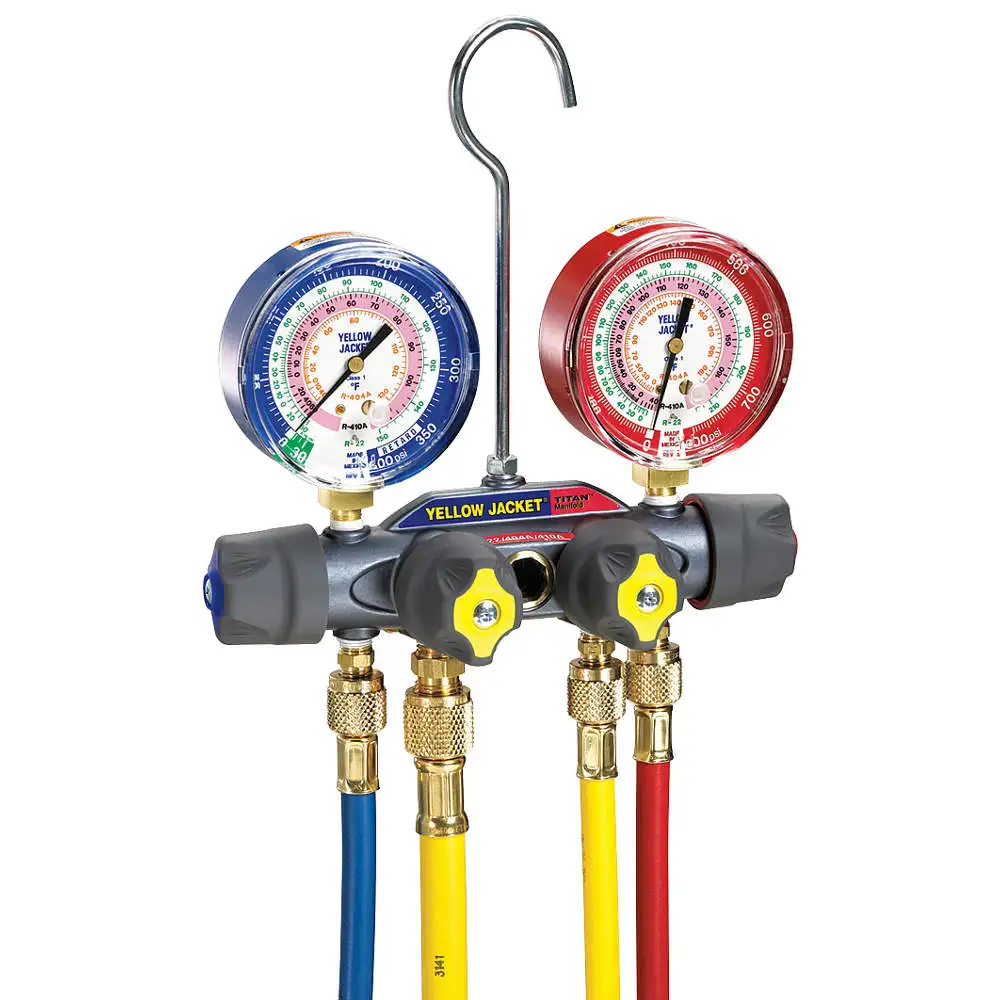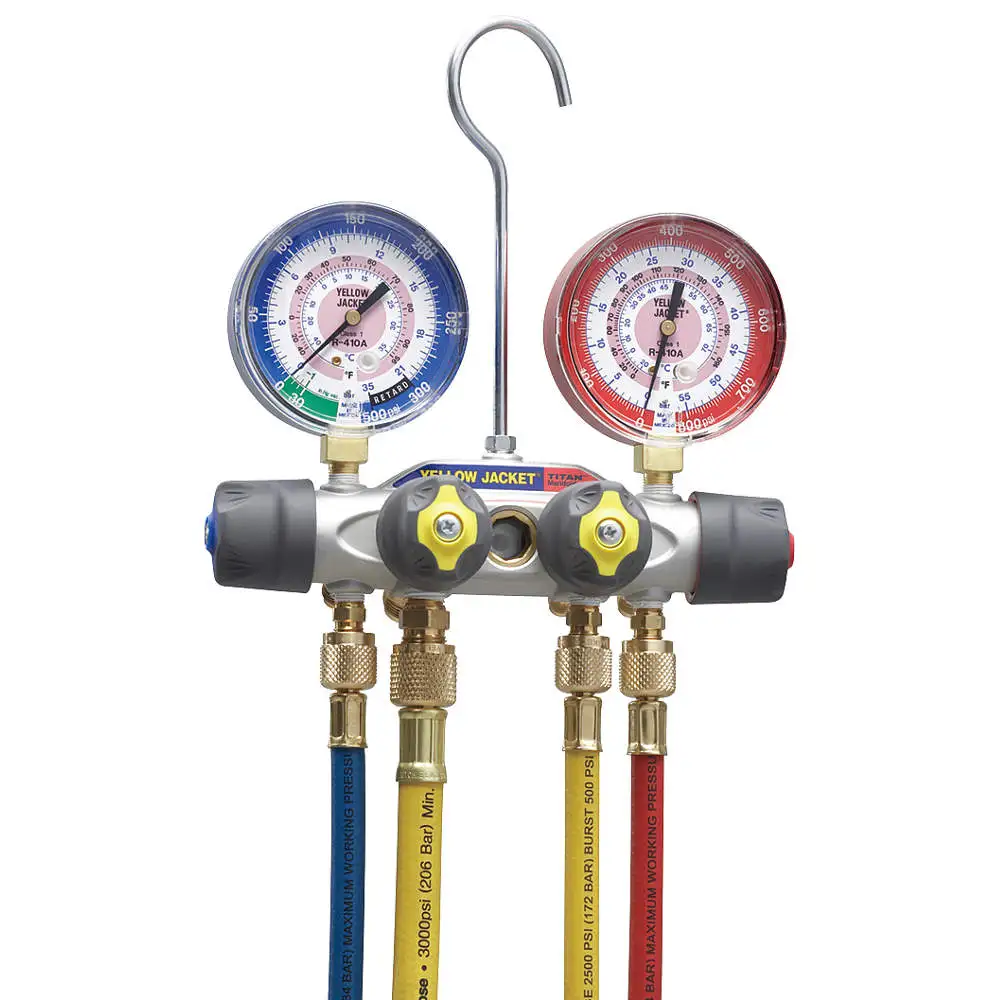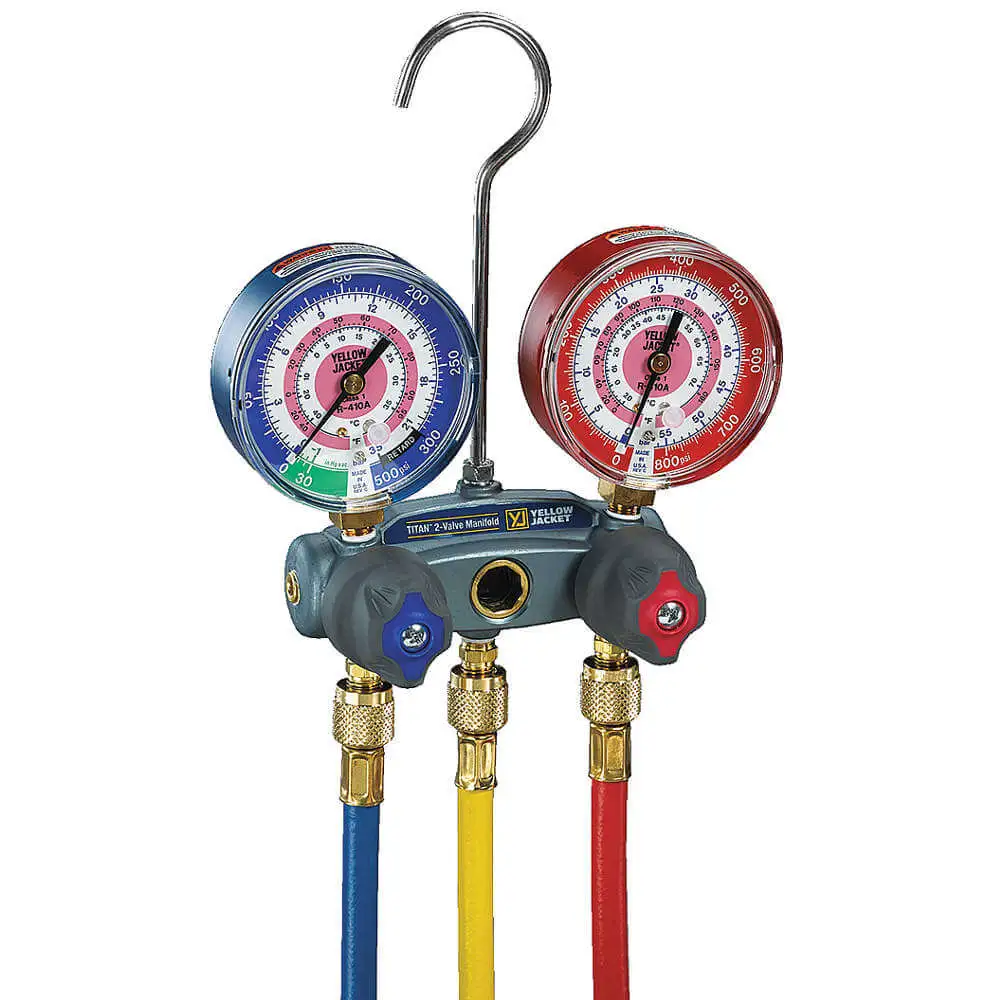Titan Test and Charging Manifolds
Ritchie Yellow Jacket test and charging manifolds are designed to monitor cooling or heating systems, particularly the pressure of refrigerants. They are used to manage the flow or pressure of a gas. These Ritchie Yellow Jacket test and charging manifolds come with the fourth hose, allowing connection to the refrigerant tank, high / low sides and recovery unit or vacuum pump for clearance, diagnostics and charging without switching hoses. They feature a dedicated 100 mesh filter in-line on all flare fittings to prevent particulate material and improve seat life. These test and charging manifolds have a sight glass that allows users to efficiently view refrigerant movement & condition during the recovery and charging operation. Ritchie Yellow Jacket test and charging manifolds have double "O" ring pistons, offering dependability and extended service life. Choose from a range of these Ritchie Yellow Jacket test and charging manifolds available in 60 and 72-inch hose lengths.
Uses
Ritchie Yellow Jacket test and charging manifolds are used for heating, ventilation, air conditioning and refrigeration applications. These gauges read the pressure of different gases and liquids in a cooling system while testing or charging the device.
Frequently Asked Questions
What are the components of a manifold?
Complex manifolds are typically constructed of solenoids, pneumatics, valves or flow restrictors and are supposed to be a subset of custom fabrication.
What is the importance of using the right manifold gauge set on a condensing unit?
While testing, a manifold gauge tells an HVAC mechanic if the system is working precisely or if there is a problem within the system. When employed as a service tool, these manifold gauges can be used to discharge sludge and moisture and take out contaminated refrigerants from the system.
What are manifold valves?
Manifold valves are instruments that attach one or more block/isolate valves of a hydraulic system. Valves of a hydraulic system can be of different types, such as ball, bleed, needle and vent valves.
Which is the better option between 4 or 3 port manifolds?
For primary tasks, a three-port manifold will generally work. A four-port manifold may be required for vacuum-pulling applications and more.
 Change Country
Change Country